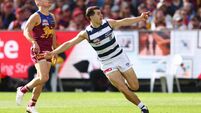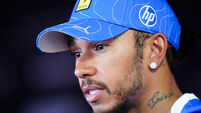NFL medical chief: 'A lot of hits from 20 and 30 years ago are illegal now'
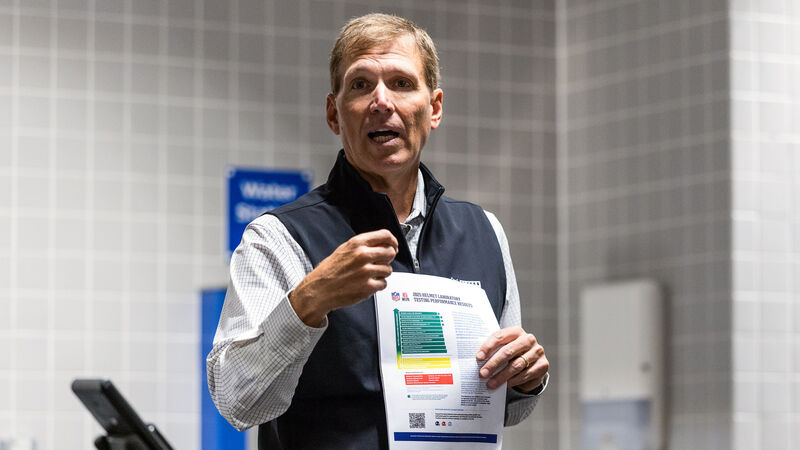
NFL chief medical officer Dr Allen Sills at the health and safety tour of Croke Park ahead of the meeting of Pittsburgh Steelers vs the Minnesota Vikings. Pic: Laszlo Geczo/Inpho
There seems to be no end to the smorgasbord of ‘activation’ events supporting Sunday’s first-ever NFL game in Ireland.
Fans can pop into a Pittsburgh Steelers tailgate party in Merrion Square from Friday on.
The Minnesota Vikings have laid claim to JR Mahon’s pub on Burgh Quay, a long spiral of a throw away from O’Connell Street. Other teams have buddied up with their own watering holes.
There is a Super Bowl Gallery at Dublin City Hall, NFL commissioner Roger Goodell is hosting a fan Q&A, while the Steelers’ footprint extends from the club shop on St Stephen’s Green to Newry and Belfast where the Rooney family, the team owners, are retracing ancestral roots.
The list goes on.
Strip away the glitz, the glamour, the diddly-eye music soundtracking the US TV coverage and the endless social media barrages, and the event that tells us most about the actual game of American football came and went in an empty Croke Park on Thursday afternoon.
A dozen Irish journalists were led through the stadium for presentations from six of the NFL’s finest medical minds, among them chief medical officer Dr Allen Sills and the league’s medical director for emergency preparedness Dr Jim Ellis.
For 90 minutes they detailed the innovations and adaptations designed to defend players against possible injuries: the rule changes, the evolution in equipment, the use of databases and the people and tech in place on match day to watch over the two rosters.
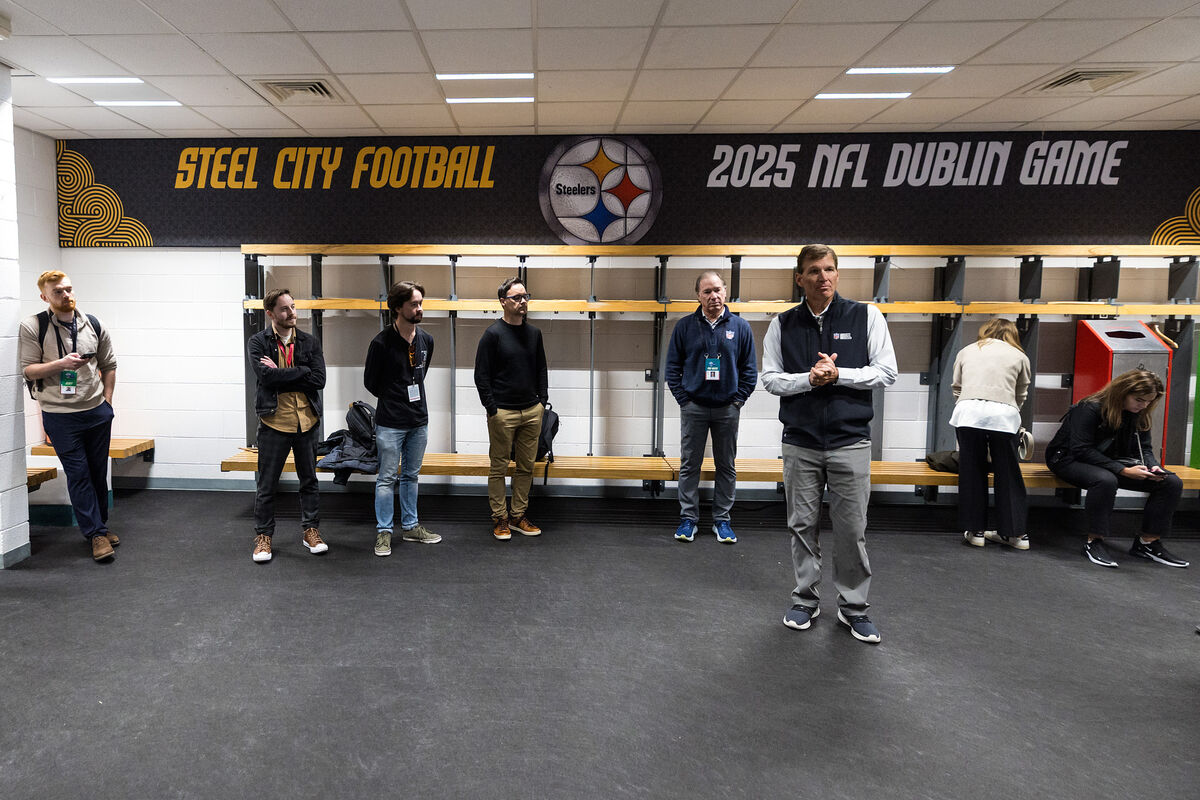
There will be 30 medical personnel, a dentist among them, in Croke Park and dedicated solely to the welfare of the 96 men in tights who will play the game. That’s the same as with any regular-season or playoff game Stateside, or even the Super Bowl itself.
Media were ushered into the blue pitchside medical tent where potential concussions are analysed, then redirected up to the stands where the spotter’s booth, replete with dozens of cameras and angles, looks out onto the green turf for signs of players in distress.
The IRFU medical department is lending a hand this weekend. Any emergency situations that might arise will be overseen by Dr Gerard O’Connor in the Mater Hospital, minutes down the road who, like many of the personnel, has everyday experience in traumatic medicine.
“The safest place to have a medical emergency in the United States is in a hospital, obviously,” said Dr Sills. “The second safest place to have a medical emergency in the United States is in a stadium on the day of an NFL game.”
Medical emergencies, like the cardiac arrest suffered by Buffalo Bills’ Damar Hamlin in January of 2023, are rare events. The emergency plan, which also covers injuries to the head, neck, cervical spine etc, might only be activated a dozen times in a season.
Other injuries are far more commonplace in a game built on brute force.
One-time player and Detroit Lions head coach Monte Clark had a great line about the fearsome and legendary 1970s full-back Larry Csonka. “When he goes on a safari,” the joke went, “the lions rolled up the windows.”
Today’s NFL is not the lawless prairie of yore. Quarterbacks have become a protected species and players elsewhere can be penalised for the slightest of touches made to the wrong part of the body or in the wrong part of the field.
It still packs a ferocious punch.
As in rugby, American football is more a collision sport than a contact sport. Dr Patrick Connor, former team physician for the Carolina Panthers, once estimated that 9% of NFL players injure their ACL (anterior cruciate ligament) within two years of getting drafted.
Timothy Gay, a professor who wrote , estimated that up to 1,600 pounds of tackling force can apply in some situations. That’s close to three-quarters of a tonne, or the same weight as a baby whale.
The challenge for the NFL and its medical department is how to reduce the risks to players without fundamentally changing the DNA of a sport that, to be frank, still depends to a significant degree on the gladiatorial nature of the contest.
“Public opinion on these issues has continued to change,” said Dr Sills. “I mean, if you look back at film from games 20 and 30 years ago, there were a lot of hits that were celebrated and were part of the game that are all illegal now, and I think people understand that.
“They understand the why, and they don't want to see that as part of the sport. That's not really the exciting part of the sport. Change is always hard, but what we've tried to do is let the data lead that change and to do it collaboratively with players and with coaches.”
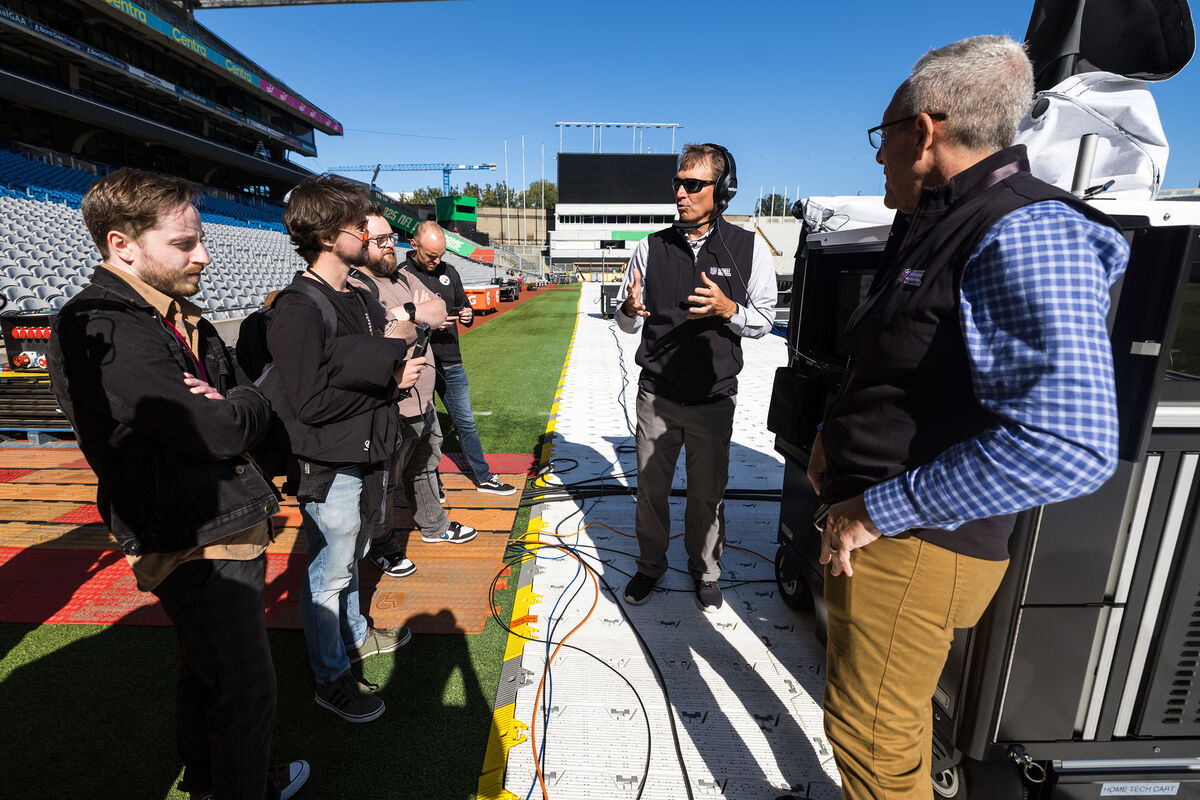
It never takes long for concussion to enter the conversation when it comes to the NFL and player safety.
The league, in a settlement reached ten years ago, agreed to compensate former players who had developed dementia and other brain diseases linked to concussions during their careers. As of early last year, over $1.2bn had been awarded to more than 1,600 people.
Dr Sills has gone on record before to say that concussions are inevitable in football but that their incidence can be reduced. NFL data says that concussions were at record lows in the 2024 season having decreased by 17% from the season before.
Rules around kickoffs, hip-drop tackles and blindside blocks have all been hailed as contributory improvements in player safety while a changing culture in the traditionally macho environment that is a locker room is another factor given due praise.
Players have been urged to change technique when bracing for tackles by using hands instead of dropping their heads and they are now self-reporting suspected concussions, either their own or those of teammates, more and more.
Some 40% of the total reported last season were player-initiated.
Other changes? More players are now using helmets rated higher on a league rating index than ever before. Guardian caps, an extra soft shell padding around the outer layer, are now being worn in practice and games by some players.
The Harvard Public Health (HPV) website has it that no piece of equipment can currently prevent brain injuries while claiming that three independent studies show the Guardian caps make no difference.
The only sure way to avoid head injuries in football? Don’t play, is their take.
Not happening. The show goes on.
CONNECT WITH US TODAY
Be the first to know the latest news and updates



